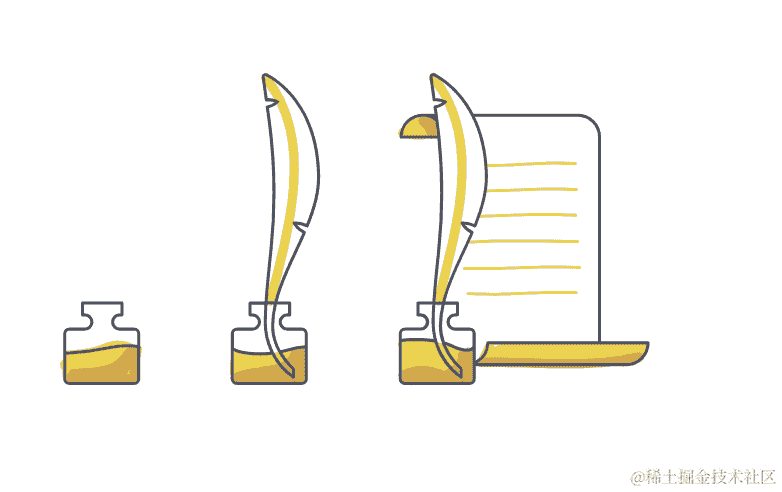揭秘Redux中间件,深入源码解读组合艺术
2023-10-14 21:57:02
在Redux框架中,中间件可谓串联全局状态和组件交互的纽带,也是实现异步操作、错误处理等高级功能的利器。本文将带领您深入Redux中间件源码,领略组合艺术的精妙之处。
一、Redux中间件简介
Redux中间件是位于Redux核心流程中的一个插件,它位于Redux store和组件之间,用于拦截、处理和修改store里的动作。举个简单的例子,如果您想在每个动作被分发到store之前记录日志,那么就可以使用中间件来实现。
二、Redux中间件源码剖析
在Redux源码中,中间件相关代码主要集中在createStore方法中。createStore函数的作用是创建一个新的Redux store,其中间件是通过applyMiddleware方法应用到store中的。
// Redux源码中的createStore方法
export function createStore(reducer, initialState, enhancer) {
if (typeof enhancer !== 'undefined') {
if (typeof enhancer !== 'function') {
throw new Error('Expected the enhancer to be a function.');
}
return enhancer(createStore)(reducer, initialState);
}
// 省略代码
// 如果未提供中间件,则创建一个没有中间件的store
if (middlewares.length === 0) {
return {
dispatch: dispatch,
subscribe,
getState,
replaceReducer,
};
}
// 将中间件应用到store上
var dispatch = applyMiddleware(...middlewares)(dispatch);
// 省略代码
}
如上所示,如果在创建store时提供了中间件,则会调用applyMiddleware函数将中间件应用到store上。applyMiddleware函数的实现如下:
// Redux源码中的applyMiddleware函数
export function applyMiddleware(...middlewares) {
return createStore => (...args) => {
// 创建一个新的store
const store = createStore(...args);
// 中间件链
let dispatch = store.dispatch;
// 从右到左遍历中间件
for (let i = middlewares.length - 1; i >= 0; i--) {
// 将中间件应用到dispatch函数上
dispatch = middlewares[i](store)(dispatch);
}
// 将中间件链应用到store上
return {
...store,
dispatch,
};
};
}
通过阅读applyMiddleware函数的代码,我们可以了解到:
- 它接受多个中间件作为参数,并返回一个函数。
- 返回的函数接受创建store所需的参数作为参数,并创建一个新的store。
- 然后,它从右到左遍历中间件,并将其应用到store的dispatch函数上。
- 最后,它将中间件链应用到store上,并返回一个新的store。
三、compose方法的函数组合应用
在applyMiddleware函数中,我们使用了compose函数将中间件应用到dispatch函数上。compose函数的实现如下:
// Redux源码中的compose函数
export function compose(...funcs) {
if (funcs.length === 0) {
return arg => arg;
}
if (funcs.length === 1) {
return funcs[0];
}
return funcs.reduce((a, b) => (...args) => a(b(...args)));
}
compose函数的功能是将多个函数组合成一个函数。它从右到左遍历函数,并将它们组合成一个新的函数。新的函数接受与第一个函数相同数量的参数,并返回最后一个函数的返回值。
在applyMiddleware函数中,我们使用了compose函数将中间件应用到dispatch函数上。这是因为中间件是一个函数链,每个中间件都是一个函数。为了将这些中间件组合成一个函数,以便能够将其应用到dispatch函数上,我们需要使用compose函数。
四、Redux-thunk和Redux-saga中间件案例
Redux-thunk和Redux-saga是两个知名的Redux中间件,它们都提供了异步操作和错误处理等高级功能。下面我们来看看它们是如何使用compose函数的。
1. Redux-thunk
Redux-thunk是一个允许我们dispatch函数的中间件。这使得我们能够在action创建函数中执行异步操作。Redux-thunk的源码如下:
// Redux-thunk源码
const thunk = store => next => action => {
if (typeof action === 'function') {
return action(store.dispatch, store.getState);
}
return next(action);
};
如上所示,Redux-thunk中间件接受一个store作为参数,并返回一个函数。这个函数接受一个next函数和一个action作为参数,并执行以下操作:
- 如果action是一个函数,则将action作为参数调用
store.dispatch函数和store.getState函数。 - 如果action不是一个函数,则直接将action作为参数调用
next函数。
2. Redux-saga
Redux-saga是一个用于管理异步流程的中间件。它使用生成器函数来定义异步流程,并提供了多种控制流程的操作符。Redux-saga的源码如下:
// Redux-saga源码
const sagaMiddleware = () => {
// 省略代码
return next => action => {
// 省略代码
// 将saga任务应用到store上
const task = saga.createTask(generator.next);
tasks.add(task);
// 省略代码
};
};
如上所示,Redux-saga中间件接受一个store作为参数,并返回一个函数。这个函数接受一个next函数和一个action作为参数,并执行以下操作:
- 将saga任务应用到store上。
- 将action作为参数调用
next函数。
五、结语
通过本文的讲解,我们对Redux中间件的源码有了更深入的了解,也对compose函数的函数组合应用有了更深入的理解。我们还通过Redux-thunk和Redux-saga中间件的案例,学习了它们是如何使用compose函数的。



